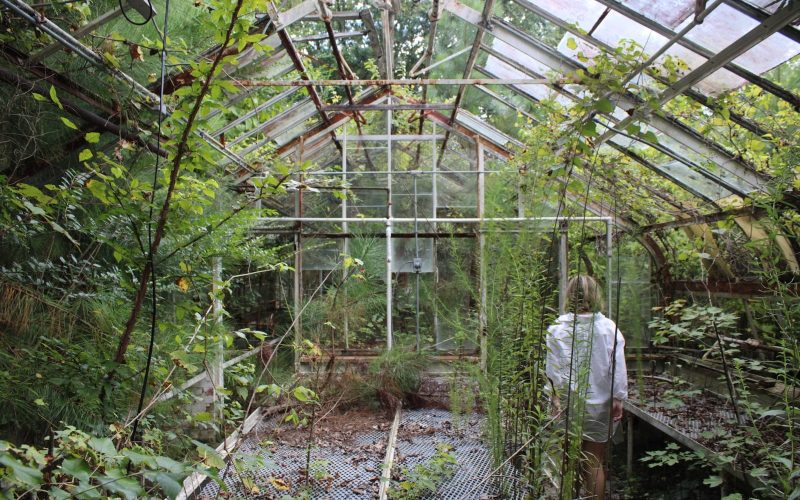To ensure the success of your greenhouse operations, proper heating is essential.
Understanding the role of heating in greenhouse operations and the benefits of efficient greenhouse heating will help you create an optimal environment for your plants.
Understanding the Role of Heating in Greenhouse Operations
Heating plays a critical role in greenhouse operations, especially in colder climates or during the winter months.
Greenhouses are designed to trap and harness solar radiation, creating a warm and controlled environment for plants to thrive.
However, natural sunlight may not provide sufficient heat to maintain the ideal temperature for plant growth.
Heating systems are used to supplement or provide the necessary warmth to meet the temperature requirements of different plants.
Maintaining the ideal temperature can extend the growing season, protect plants from frost, and promote healthy growth and development.
Benefits of Efficient Greenhouse Heating
Efficient greenhouse heating offers several benefits that contribute to the overall success of your greenhouse:
- Optimal plant growth: Providing the right amount of heat ensures that your plants receive the necessary warmth for photosynthesis, nutrient absorption, and metabolic processes. This leads to healthier and more productive plants.
- Year-round cultivation: With proper heating, you can extend the growing season and continue cultivating plants even in cold weather. This allows for a wider variety of crops and a continuous supply of fresh produce.
- Protection from frost and cold damage: Heating helps prevent frost damage, which can be detrimental to plants. Maintaining a consistent temperature can safeguard your plants and avoid losses due to frost or extreme cold.
- Reduced disease and pest pressure: A well-heated greenhouse creates an environment that is less favorable for pests and diseases. Many pests and pathogens thrive in cooler temperatures, and efficient heating can help mitigate their impact.
- Energy efficiency: Investing in energy-efficient heating systems can help reduce energy consumption and lower heating costs. This not only benefits the environment but also reduces operational expenses.
By understanding the importance of proper greenhouse heating and the benefits it offers, you can make informed decisions when it comes to heating your greenhouse.
Assessing your heating needs, considering different heating options, and incorporating energy-efficient practices will help you create an optimal environment for your plants to grow and thrive.
Assessing Your Greenhouse Heating Needs
To efficiently heat your greenhouse, assessing your specific heating needs is important.
By considering various factors and calculating the heating capacity required, you can ensure optimal heating for your greenhouse environment.
Factors to Consider When Determining Heating Requirements
When determining your greenhouse heating requirements, several factors come into play.
These include:
- Greenhouse Size: The size of your greenhouse is critical in determining heating needs. Larger greenhouses generally require more heating capacity than smaller ones.
- Insulation: The level of insulation in your greenhouse affects heat retention. Well-insulated greenhouses require less heating compared to those with poor insulation.
- Outside Temperature: The climate and typical winter temperatures in your area influence the amount of heating required to maintain desired temperatures inside the greenhouse.
- Crop Requirements: Different plants have varying temperature requirements. Consider the specific temperature needs of the plants you intend to grow in your greenhouse.
- Desired Temperature Differential: Determine the temperature differential you wish to achieve between the inside and outside of the greenhouse during colder periods.
By considering these factors, you can better understand your greenhouse’s heating requirements.
Calculating the Heating Capacity Needed for Your Greenhouse
To calculate the heating capacity needed for your greenhouse, you can use a simple formula:
Heating Capacity (BTU) = Greenhouse Volume (cubic feet) × Temperature Differential (°F) × 0.133
The result of this calculation provides an estimate of the heating capacity required in British Thermal Units (BTU) per hour.
| Greenhouse Size | Greenhouse Volume (cubic feet) | Temperature Differential (°F) | Required Heating Capacity (BTU/hr) |
|---|---|---|---|
| Small | 500 – 1,000 | 20 | 13,300 – 26,600 |
| Medium | 1,000 – 2,500 | 20 | 26,600 – 66,500 |
| Large | 2,500 – 5,000 | 20 | 66,500 – 133,000 |
| Extra-Large | 5,000+ | 20 | 133,000+ |
Remember that this is a rough estimation, and other factors, such as insulation and outside temperature, can affect the heating capacity required.
Understanding and assessing your greenhouse’s heating needs is essential to ensuring efficient and effective heating.
By considering these factors and calculating the appropriate heating capacity, you can create an ideal environment for your plants.
For more information on greenhouse-related topics, check out our articles on what is a greenhouse and how does a greenhouse work.
Different Heating Options for Greenhouses
When it comes to heating your greenhouse, there are several options available to ensure a suitable environment for your plants.
Let’s explore some of the most common heating methods: heating with natural gas, heating with propane, electric heating solutions, and biomass heating systems.
Heating with Natural Gas
Heating with natural gas is a popular choice for greenhouse owners due to its affordability and efficiency.
Natural gas heaters use a burner to generate heat, which is then distributed throughout the greenhouse using fans or ducting systems.
This method provides consistent and even heating, promoting optimal plant growth.
The benefits of natural gas heating include its clean combustion process, low emissions, and cost-effectiveness compared to other fuel sources.
However, it’s important to ensure proper ventilation and safety measures when using natural gas heaters.
Regular maintenance and professional installation are crucial to ensure safe operation.
Heating with Propane
Heating with propane is another common heating option for greenhouses.
Propane heaters provide reliable and efficient heat, making them suitable for various greenhouse sizes.
These heaters use propane gas as fuel and can be easily controlled to maintain the desired temperature.
Propane heating systems offer flexibility and can be placed in different areas of the greenhouse for optimal heat distribution.
They are also portable, which allows for easy relocation if needed.
However, it’s important to handle propane tanks with caution and follow safety guidelines.
Regular inspections and maintenance are necessary to ensure safe and efficient operation.
Electric Heating Solutions
Electric heating solutions are convenient for smaller greenhouses or areas where gas heating may not be feasible.
Electric heaters can be wall-mounted or portable, providing localized heat where needed.
These heaters often come with adjustable thermostats, allowing you to maintain a consistent temperature.
Electric heating solutions are easy to install and use, making them suitable for novice greenhouse owners.
However, they may incur higher energy costs compared to gas heating options.
It’s important to consider energy efficiency and insulation techniques to maximize the effectiveness of electric heaters.
Biomass Heating Systems
For greenhouse owners who prioritize sustainability and environmental consciousness, biomass heating systems offer an eco-friendly heating solution.
These systems utilize organic materials, such as wood pellets or agricultural waste, as fuel sources.
Biomass heaters generate heat through combustion, which is then distributed throughout the greenhouse.
Biomass heating systems provide an efficient and renewable alternative to traditional heating methods.
They can be cost-effective in the long run, especially if a local and reliable source of biomass fuel is available.
Regular maintenance and proper ash disposal are necessary to ensure the longevity and efficiency of biomass heaters.
Consider your specific greenhouse needs, budget, and environmental priorities when selecting the most suitable heating option.
It’s important to consult with a professional to assess your greenhouse’s heating requirements and determine the best heating solution for your plants.
Remember to prioritize safety, energy efficiency, and sustainable practices in your greenhouse heating system.
Energy Efficiency Tips for Greenhouse Heating
When it comes to heating your greenhouse, energy efficiency is key.
By implementing certain practices, you can maximize the heat retention and minimize energy waste.
Below are some tips to help you efficiently heat your greenhouse.
Insulation and Air Sealing
Insulating your greenhouse is crucial for reducing heat loss and maintaining a consistent temperature.
Insulation materials such as bubble wrap, polyethylene foam, or double-layered greenhouse plastic can help trap heat inside.
Pay special attention to areas where heat can escape, such as doors, vents, and windows.
Proper air sealing by sealing gaps and cracks can prevent drafts and improve heat retention.
Proper Ventilation
While insulation is important, it’s also crucial to have proper ventilation in your greenhouse.
Good airflow helps regulate the temperature and prevents excessive humidity buildup, which can lead to plant diseases.
Consider installing vents or fans to circulate air effectively. Automated systems that open and close vents based on temperature fluctuations can be convenient.
Utilizing Thermal Mass
Thermal mass, such as water barrels or concrete floors, can help absorb and release heat slowly, providing thermal stability.
Place these thermal mass objects strategically in your greenhouse, such as near sunny spots.
During the day, they absorb heat; at night, they release it, helping to maintain a more even temperature.
Energy-Saving Heating Practices
To save energy when heating your greenhouse, consider the following practices:
- Timing: Set your thermostat to lower temperatures when the greenhouse is unoccupied, or plants don’t require as much heat as at night.
- Zoning: If you have different areas with varying heating needs, consider using separate heating systems or zone controls to heat only the areas that require it.
- Thermostat control: Use a programmable thermostat to ensure precise temperature control and to avoid unnecessary heating.
- Alternative heat sources: Explore alternative heat sources, such as biomass heating systems, which use renewable fuels like wood pellets or agricultural waste. These can be more sustainable and cost-effective in the long run.
Implementing these energy-efficient practices will help you reduce energy consumption and create a more sustainable and cost-effective heating system for your greenhouse.
For more information on greenhouse-related topics, check out our articles on how to cool a greenhouse and how much does it cost to build a greenhouse.
Remember, a well-heated greenhouse provides the ideal environment for your plants to thrive while minimizing your environmental impact.
Additional Considerations for Greenhouse Heating
Ensuring efficient and reliable heating for your greenhouse involves considering a few additional factors.
These include backup heating systems, thermostats, temperature control, and maintenance and safety precautions.
Backup Heating Systems
A backup heating system is essential to safeguard your greenhouse plants during unexpected events such as power outages or equipment failures.
It’s recommended to have an alternative heating solution ready, such as a backup heater or a generator.
This ensures that your plants remain protected and the temperature inside the greenhouse stays within the optimal range.
When selecting a backup heating system, consider factors such as fuel availability, ease of use, and the heating capacity it can provide.
Having a backup plan in place will give you peace of mind, knowing that your plants are protected even during unforeseen circumstances.
Thermostat and Temperature Control
Maintaining the right temperature inside your greenhouse is crucial for the health and growth of your plants.
A reliable thermostat and temperature control system are essential for achieving precise temperature management.
Investing in a programmable thermostat allows you to set specific temperature ranges for different times of the day, ensuring that your plants receive the ideal conditions they require.
Some advanced thermostats even offer remote monitoring and control capabilities, allowing you to adjust the temperature from anywhere using your smartphone or computer.
Regularly calibrating and testing your thermostat is important to ensure accurate temperature readings.
This helps to prevent temperature fluctuations that could negatively impact your plants.
Additionally, consider installing temperature sensors at different locations within the greenhouse to monitor temperature variations and make necessary adjustments.
Maintenance and Safety Precautions
Proper maintenance and safety precautions are vital to keep your greenhouse heating system in optimal condition and ensure the safety of both your plants and yourself.
Here are some important maintenance and safety practices to follow:
- Regularly clean and inspect your heating equipment: Remove any dust, debris, or buildup that could affect the performance of your heating system. Inspect for any signs of wear and tear and address them promptly.
- Check for leaks: If you’re using a fuel-based heating system, regularly inspect for any gas or fuel leaks. Ensure that all connections are secure and there are no signs of leakage.
- Keep flammable materials away: Maintain a safe distance between your heating equipment and any flammable materials, such as plant debris, chemicals, or combustible materials.
- Follow manufacturer’s guidelines: Adhere to the manufacturer’s instructions for maintaining and operating your heating system. This includes recommended service intervals, filter replacements, and any other specific requirements.
By considering these additional aspects of greenhouse heating, you can ensure your heating system’s continued functionality and safety.
This helps create an optimal environment for your plants, allowing them to thrive and flourish.
Remember to prioritize regular maintenance, have a backup plan in place, and invest in reliable thermostats and temperature control systems to achieve efficient and effective greenhouse heating.








